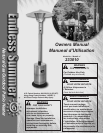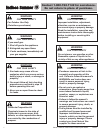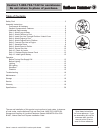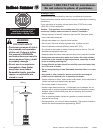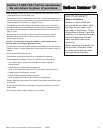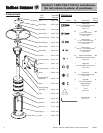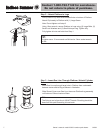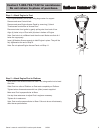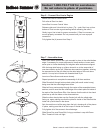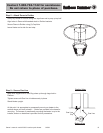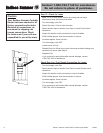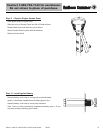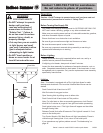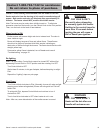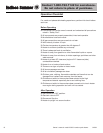
®
Contact 1-800-762-1142 for assistance.
Do not return to place of purchase.
3 Owner’s manual: model 233010 outdoor patio heater 6/8/04
®
Contact 1-800-762-1142 for assistance.
Do not return to place of purchase.
4Owner’s manual: model 233010 outdoor patio heater 6/8/04
• After shutdown, do not touch burner assembly until heater has cooled
(approximately 45 minutes after use).
• The appliance and its individual shutoff valve must be disconnected from
the gas supply piping system during any pressure testing of that system
at test pressures in excess of 1/2 psig (3.5 kpa).
• The appliance must be isolated from the gas supply piping system by
closing its individual manual shutoff valve during any pressure testing of
the gas supply piping system at test pressures equal to or less than 1/2
psig (3.5 kpa).
• Always perform a leak test on gas connections whenever heater is
serviced. Never use a flame to test for leaks. Do not smoke while
performing a leak test.
Caution: It is essential to keep the heater’s valve compartment,
burners, and circulating air passages clean.
• Spiders and insects can create a dangerous condition that may damage
heater or make it unsafe. Keep burner area clean of all spiders, webs, or
insects.
• Inspect heater before each use.
• Have heater inspected annually by a qualified service person.
• Check heater immediately if any of the following conditions exist:
• The smell of gas in conjunction with extreme yellow tipping of
burner flames.
• Heater does not reach proper temperature.
Note: At temperatures less than 40º F, heat output will be reduced.
• Heater’s glow is excessively uneven.
• Burner makes popping noises during use.
Note: A slight pop is normal when burner is extinguished.
• Carbon deposits may create a fire hazard. Keep dome and emitter clean
at all times.
• Do not clean heater with combustible or corrosive cleaners. Use warm,
soapy water.
• Do not paint engine, engine access panel or dome.
FOR YOUR SAFETY:
Beware of Spiders
Spiders or small insects can
get into the burner tube or other
openings of your heater, and
spin webs or build nests. These
obstructions can lead to gas ow
problems. It is important to make
frequent inspections of these
areas and clean them when
necessary.
Before operating your heater for
the rst time, be sure to check
for obstructions that may have
occurred during shipment.



